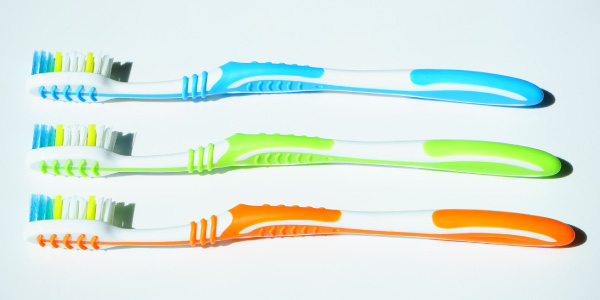
There are plenty of toxic things in our environment, but did you know that some simple things, like certain toothbrushes, could be made from potentially harmful material too? Some toothbrushes on the market are made with BPA and could be adding toxins to your body. We’ve outlined what you need to know about BPA and how to check if your toothbrush is BPA-free.
What Is BPA?
The acronym BPA stands for bisphenol A. This industrial chemical is used to make several kinds of plastics and resins. It is found in polycarbonate plastics used often in metal and plastic food containers. It is also used to make many consumer goods, such as some toothbrushes.
What Are the Possible Health Effects?
The research on BPA shows that there are some areas of concerns in terms of the effect on BPA on infants and young children. Some believe that high levels of BPA act as a fake hormone, disrupting the normal hormones in the developing body, and could cause brain and behavioral issues.
Children are not the only ones affected by BPA. Recent studies link increased BPA to higher blood pressure. Other long-term issues are still being studied. While the FDA does say that low levels of BPA exposure are safe, it is smart to consider ways to limit your exposure, and especially your children’s exposure.
How to Know If Your Tooth-Brush is BPA-Free
Using a toothbrush made without BPA is a simple way to limit your exposure to BPA. Many toothbrushes are still made with this chemical, but there are some ways to guarantee you are using the right toothbrush. The, “Soft Landing Site,” shows several brands, including WooBamboo, which has brushes for kids and adults.
There are many companies that make toothbrushes for children without BPA. The ‘Mama Instincts” site lists many companies that cater more to children.
If you need help deciding the right toothbrush for your or your child, contact us today and we’d be happy to help.
Let Vann Family Dental help you choose better products for you and your family’s health!
